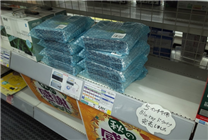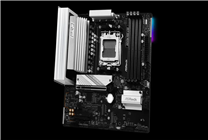### Summary
– As Microsoft ends support for Windows 10, the demand for optical drives in Japan is witnessing a significant resurgence.
– Many consumers prefer physical copies of Windows 11, leading to a scarcity of optical drives, especially high-performance Blu-ray models.
– The revival of optical drives highlights Japan’s unique inclination toward physical media, driven by both consumer habits and specific software needs.
—
In a notable shift within the technology landscape, Microsoft officially concluded its technical support for Windows 10 on October 19th. This pivotal change has led to an inevitable upgrade requirement for users to transition to Windows 11. A surprising consequence of this upgrade has emerged in Akihabara, Japan, where the once-obsolete optical drives are experiencing a remarkable resurgence in popularity.
Although digital products and keys have long dominated the market, a substantial segment of conservative users in Japan still values the tangible aspect of owning a physical CD of the Windows 11 operating system. This preference has propelled optical drives back into the spotlight, transforming them into sought-after commodities.
### The Resurgence of Optical Drives
Reports indicate that Akihabara’s retail landscape has seen a drastic reduction in optical drive availability, with high-performance BD-R Blu-ray drives flying off the shelves. Additionally, standard DVD-R drives are in short supply, as consumers are eager to upgrade their systems through traditional physical media.
A local store owner noted that customers are particularly focused on reading and writing speeds, leading many to favor built-in optical drives over external ones. The inherent limitations of external drives contribute to this preference, as users seek the fastest possible performance.
This trend underscores a broader cultural context within Japan, where the market’s special affinity for physical media significantly drives the revival of optical drives. For Japanese consumers, the historical demand for physical collections of audio-visual content, games, and software has been a longstanding tradition. Products such as Blu-ray discs and game cartridges continue to find favor among users who appreciate the value of ownership.
### The Role of Industry Software
Further reinforcing the need for optical drives is the continued preference for optical discs among various industries. Many professional software applications in fields like graphic design and industrial equipment still rely on optical media as the primary distribution method. This necessity requires users to retain optical drive functionality well into advancements in operating systems like Windows 11.
Interestingly, the trend doesn’t end with optical drives. Japan maintains a unique adherence to other legacy technologies, including floppy drives and even fax machines, demonstrating a cultural preference for physical technology that persists amidst the digital revolution.
### A Unique Cultural Perspective
The Japanese market’s inclination towards physical media can be attributed to several factors. Firstly, there is a strong cultural appreciation for collectability and tangible products, particularly in entertainment sectors. This contrasts sharply with trends in other regions where digital distribution has become far more prevalent.
Moreover, the continued use of optical drives is often dictated by industry standards. For instance, certain sectors, including manufacturing and design, rely heavily on specific software that still utilizes optical disks for installation and updates. The ability to install these applications from a CD-ROM, similar to experiences with Windows 10, remains an important aspect for many users transitioning to Windows 11.
### Conclusion
As Microsoft phases out support for Windows 10, it is evident that the resurgence of optical drives in Japan reflects more than just a response to software needs. It represents a deeper societal trend where traditional media still has a place in daily life. For many consumers, the shift to Windows 11 will not only be about upgrading software but also about preserving a connection to their preferred forms of media and technology.
The current demand for optical drives in Akihabara serves as a compelling reminder that even in a digital age, there is a significant portion of society that cherishes and values physical products. This trend may continue as long as there are industries, technologies, and consumer preferences that align with the use of optical media.
—






